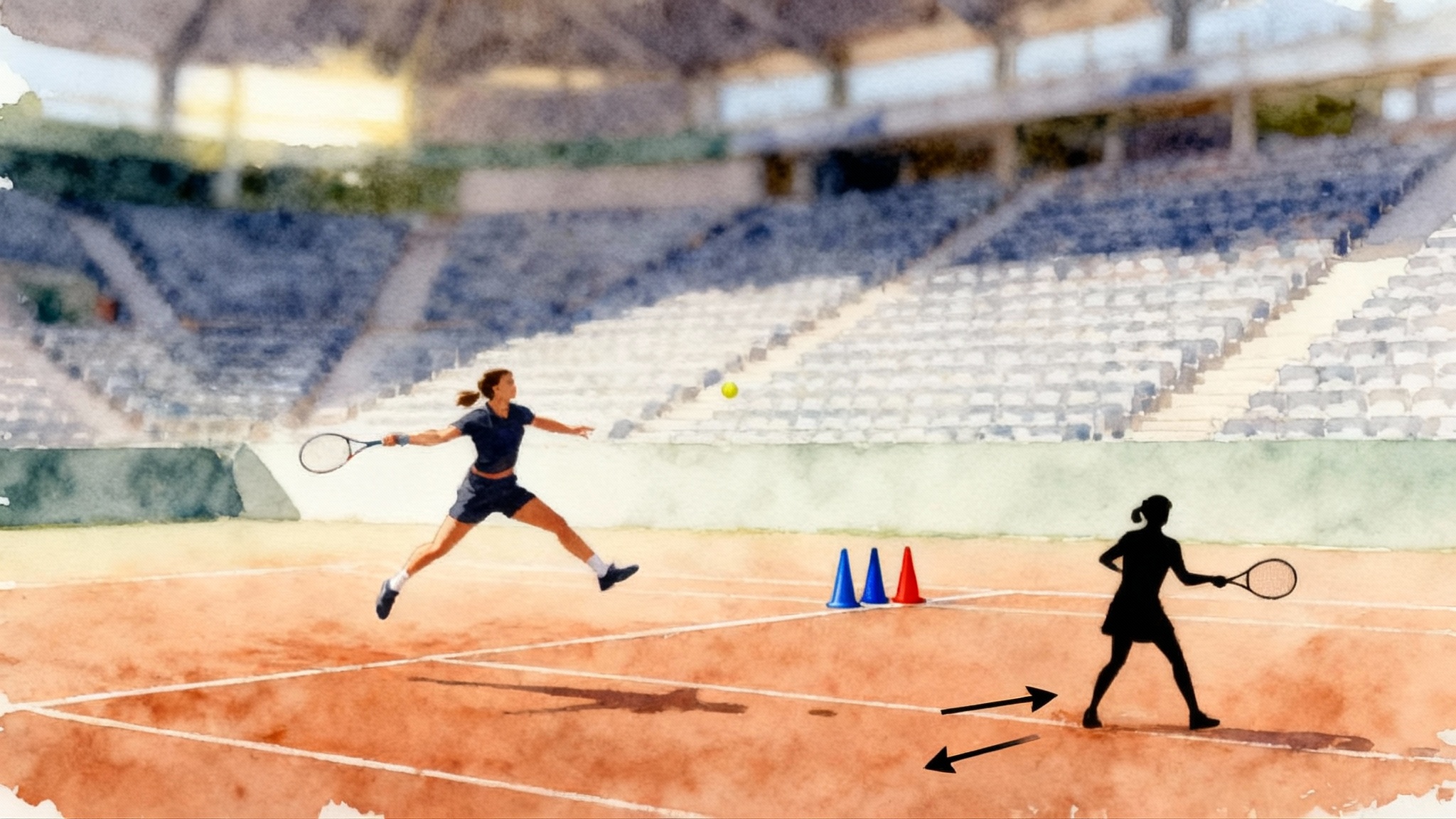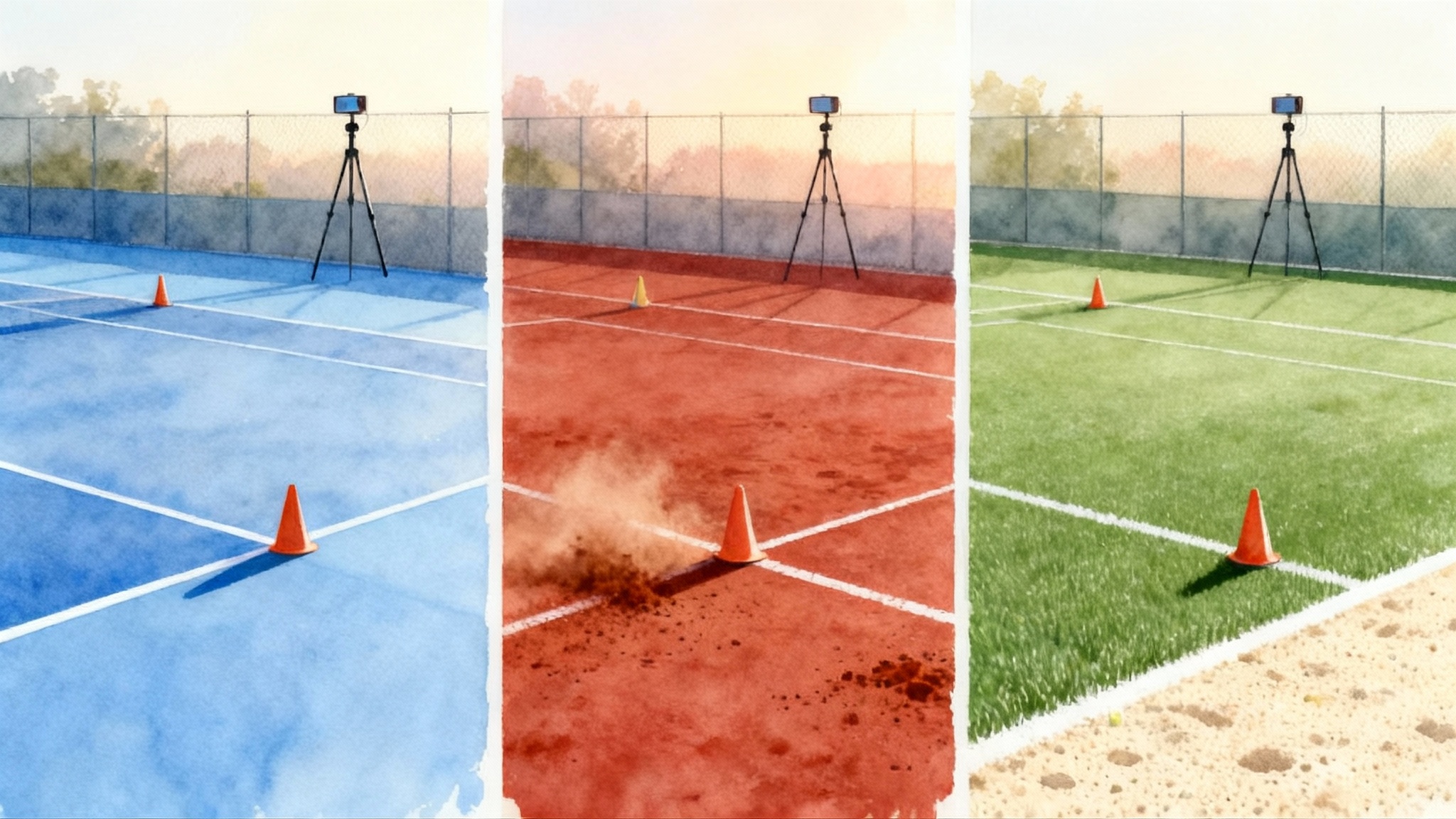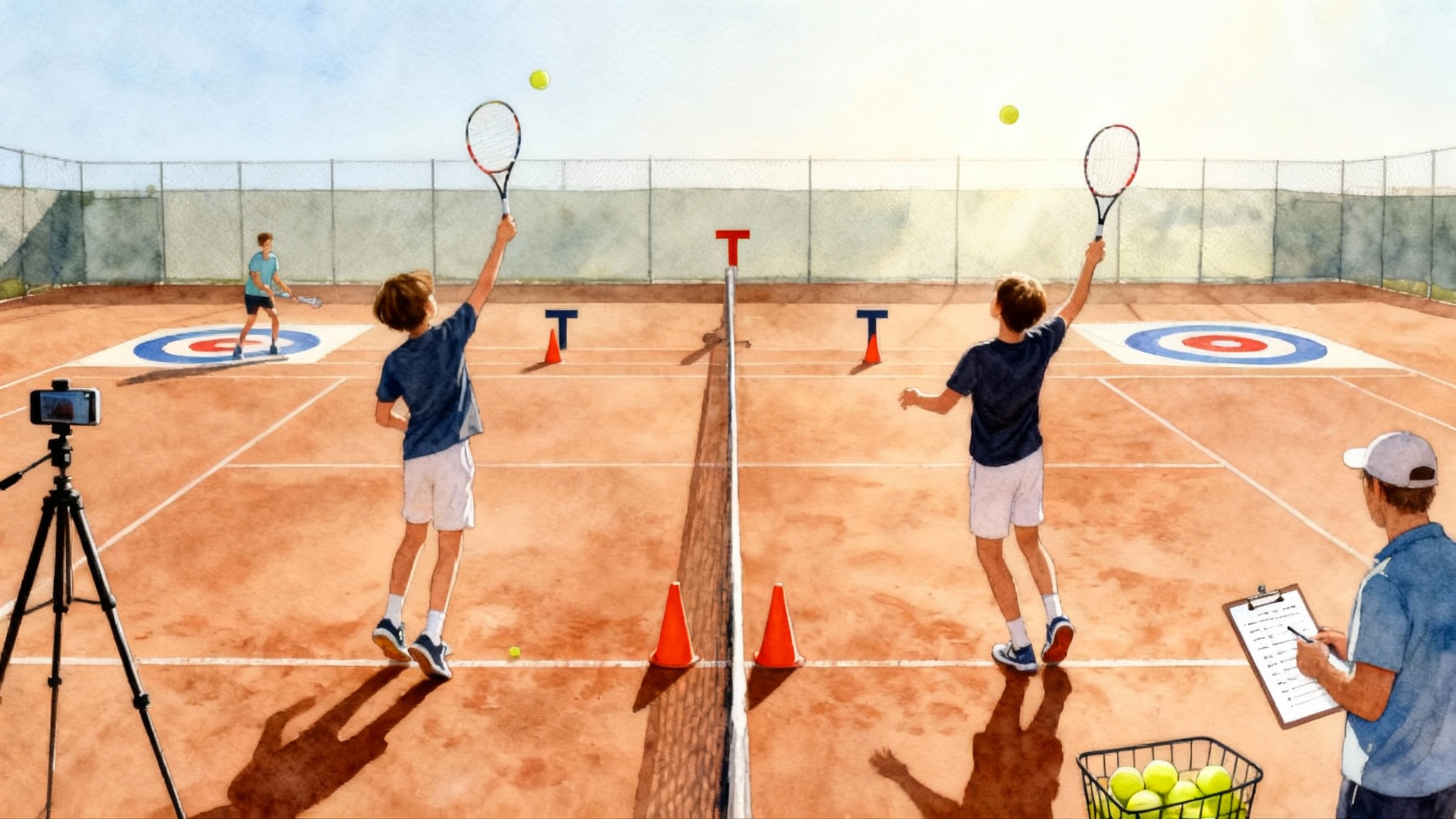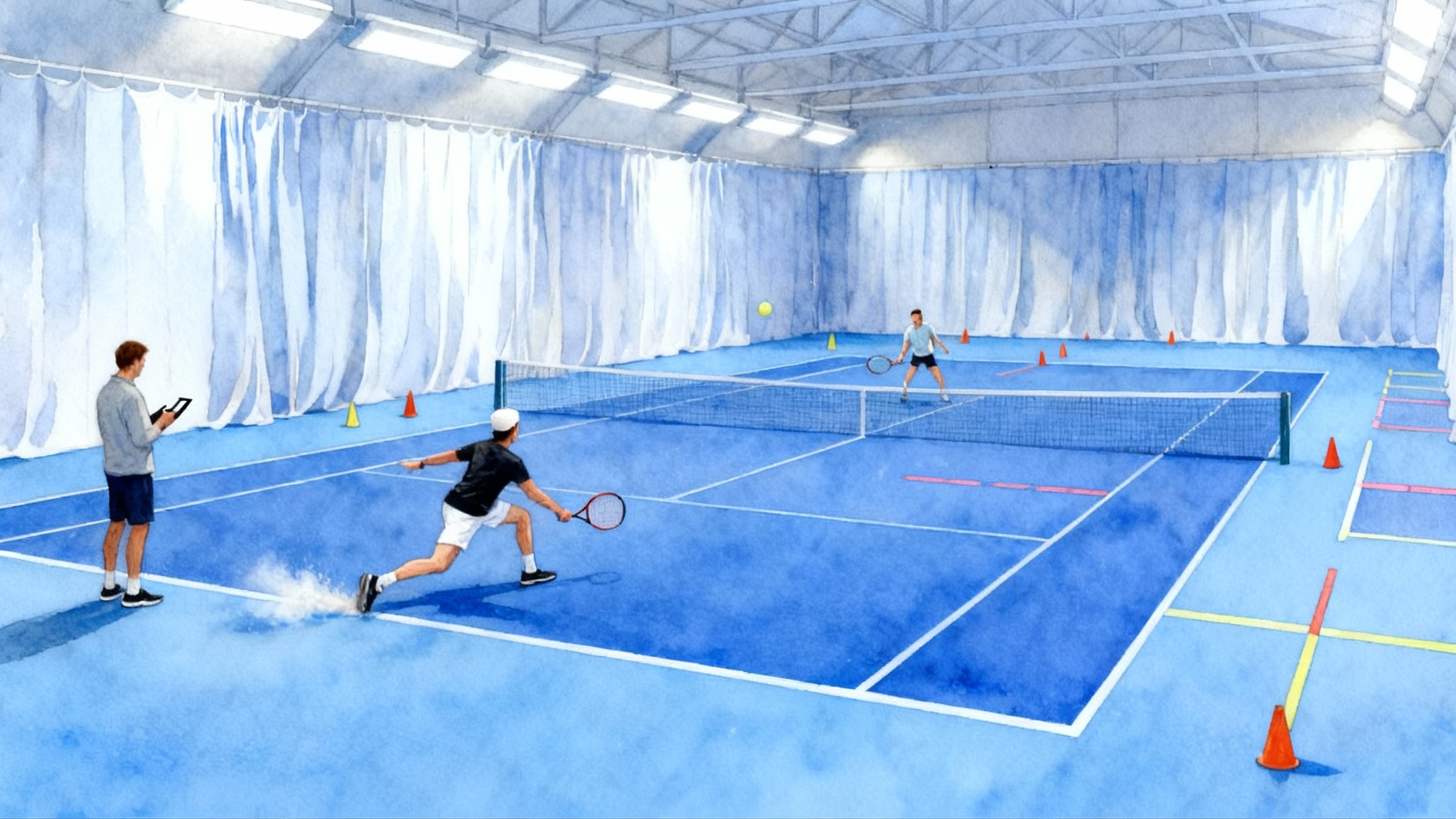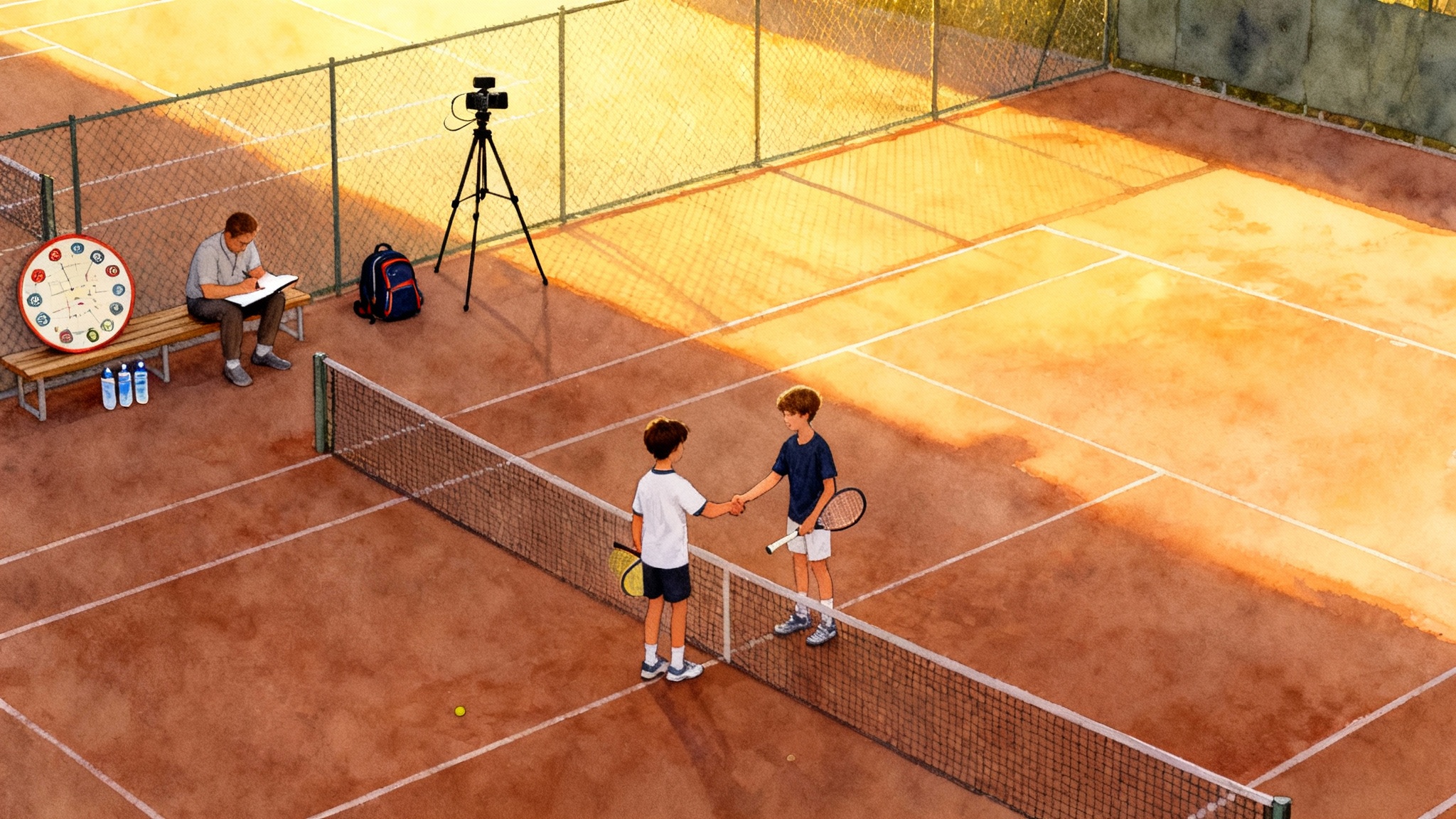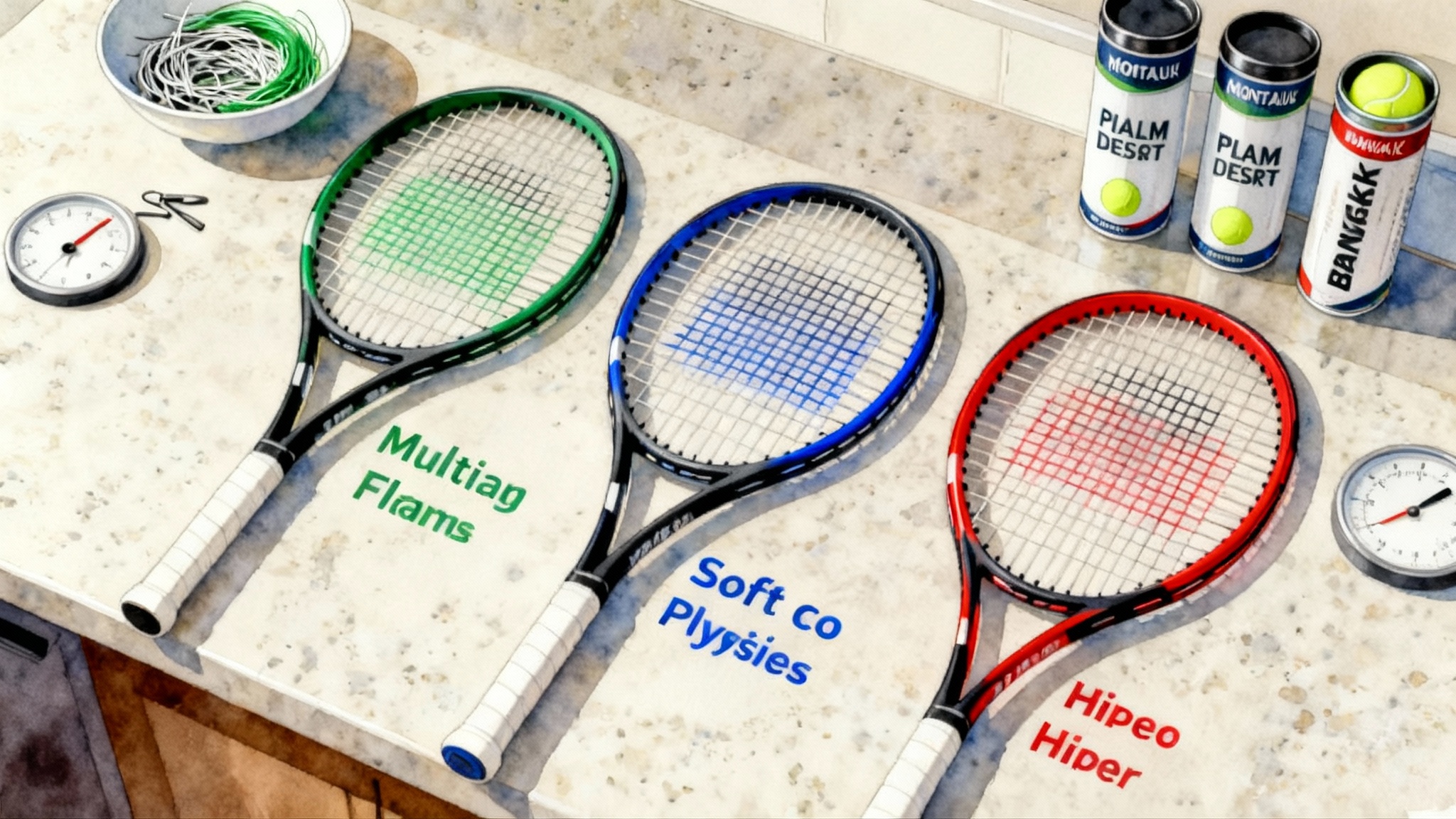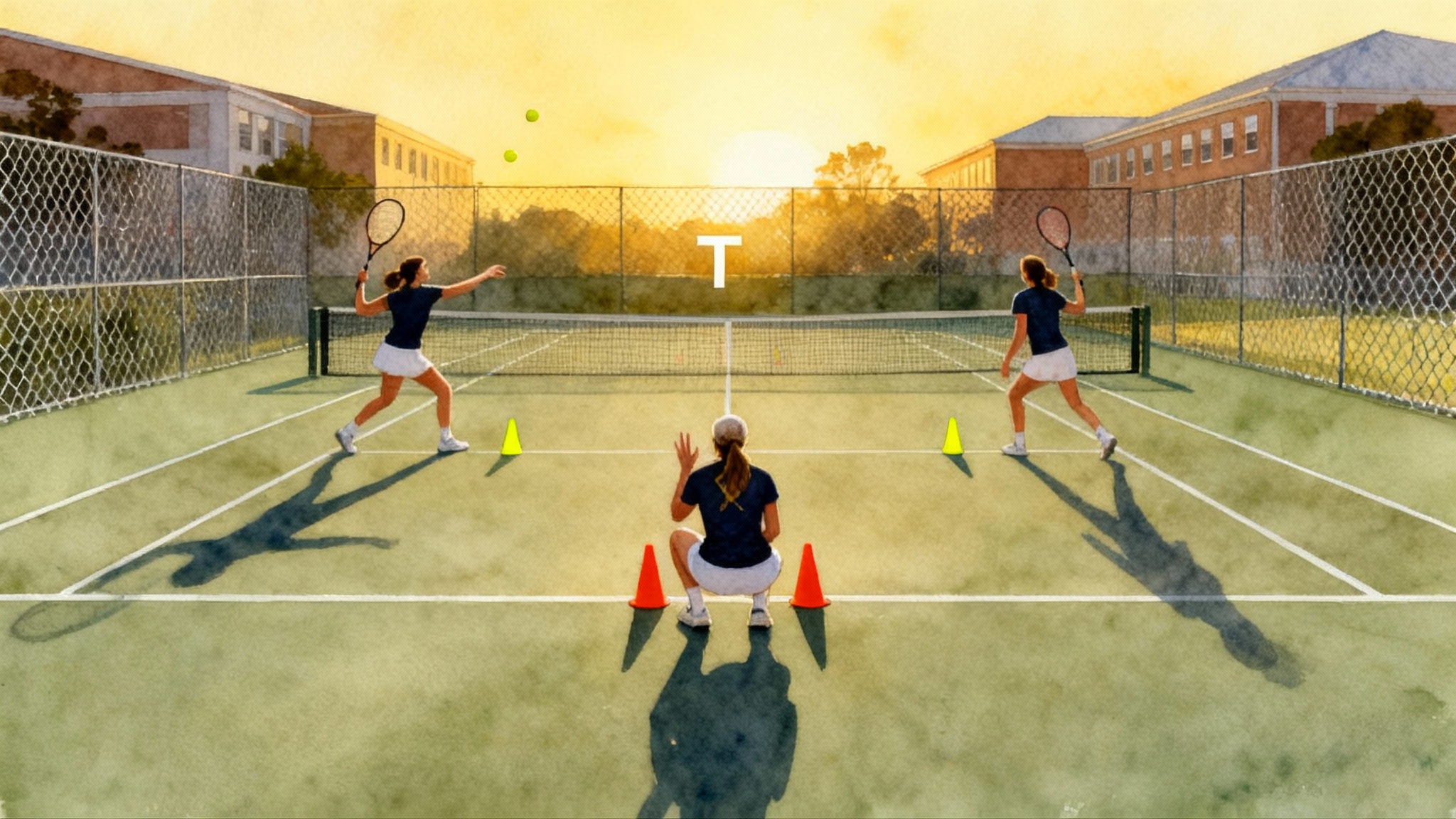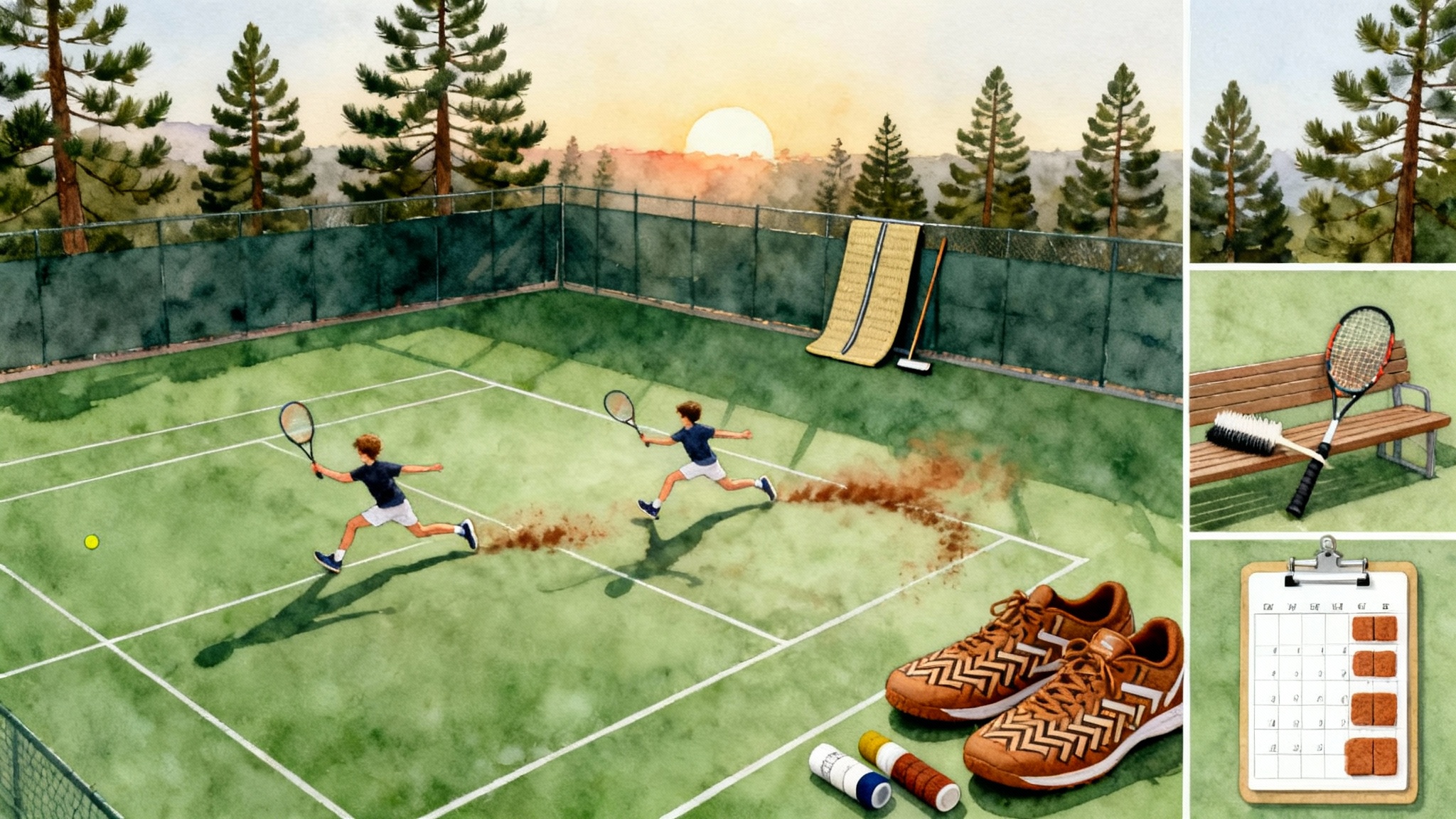The Smart Tennis Week: Templates for Juniors, College, Adults
Turn school and work calendars into smarter tennis weeks. Practical templates for juniors, college bound players, and adults with RPE tracking, match play, strength and speed, recovery, and adjustments for tournaments and exams.
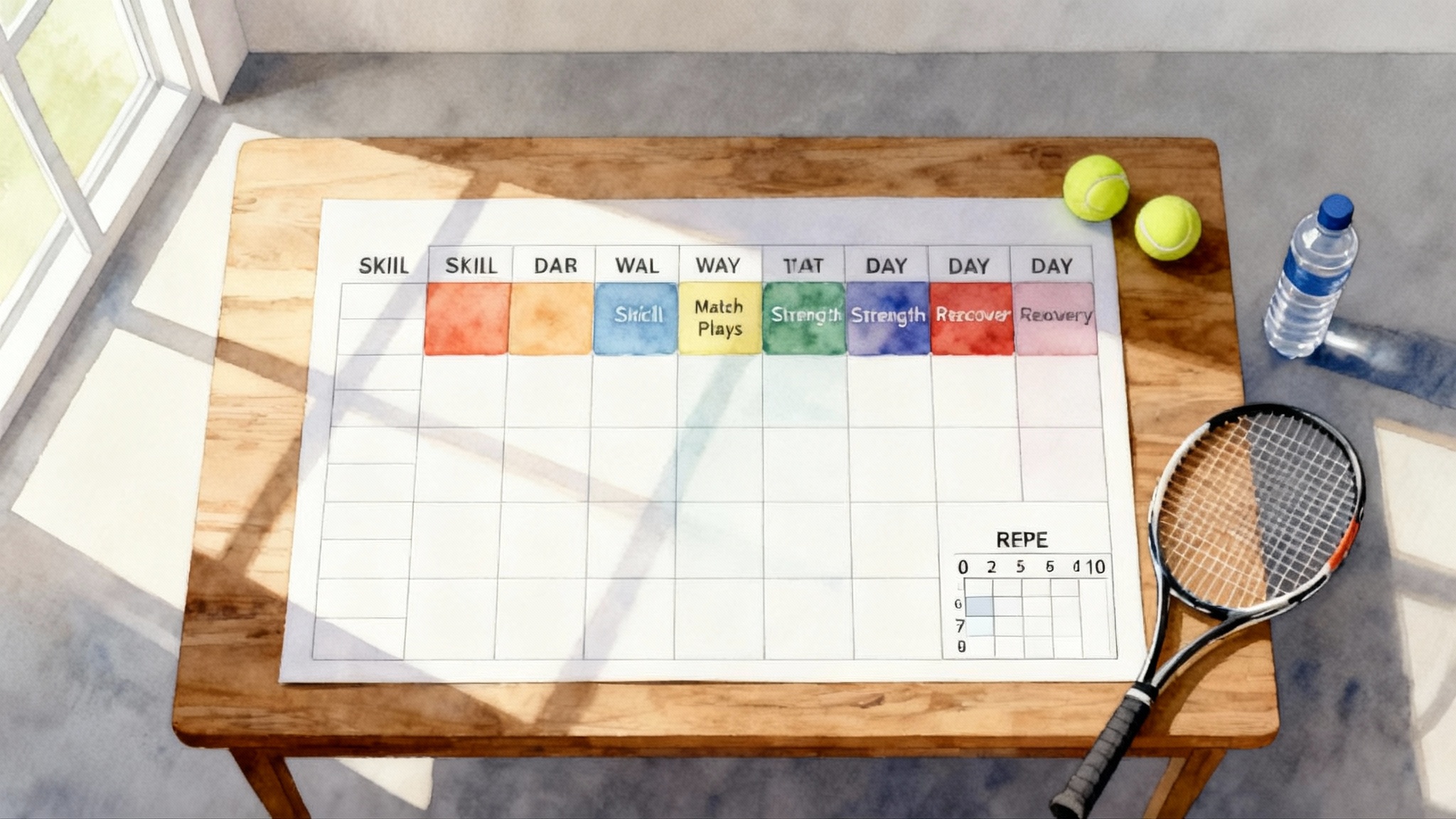
The big idea: design your week first, then fit the tennis in
Great tennis seasons are built one week at a time. The constraint is rarely motivation. The constraint is the calendar. If you start with fixed obligations and then assign your training blocks, you get reliable progress without burnout. This article gives you ready-to-use weekly templates for three groups: juniors, college-bound players, and adults. Each plan combines four building blocks: on-court skill work, live play, strength and speed, and recovery. A simple workload tool keeps you inside a safe, productive zone, and we include easy adjustments for tournament weeks and exam or work crunches.
The four building blocks of a smart week
Think of your tennis week as a balanced plate. Every plate has four portions:
-
Skill blocks: basket drills, pattern work, serve plus one, return plus one, transition reps, and tactical rehearsals. Short, focused, and technical. Quality beats volume.
-
Match play: point play with a score, practice sets, tie break circuits, or full matches. This pressure teaches decision making and pacing that drills cannot replicate.
-
Strength and speed: movement mechanics, acceleration, deceleration, lateral change of direction, power, and durability work. Lifts and plyometrics are scaled by age and training age. The goal is force production, joint integrity, and repeat sprint ability.
-
Recovery: sleep, mobility, light aerobic flush, and off-feet time. Recovery is not the absence of work. It is the right type of work that restores you for the next session.
A good week touches all four. The proportions shift by age, level, and calendar load.
Your simple workload system: RPE in 30 seconds
You do not need heart rate belts to manage training load. Use session RPE: after each session, rate how hard it felt on a 0 to 10 scale, then multiply by minutes of the session. For example, a 75 minute drill block at RPE 6 equals 450 load points. Track daily and total weekly load. The method is widely used in sport and aligns with the Borg perceived exertion scale. If you want a quick primer, see the Borg perceived exertion scale.
Practical guardrails:
- Most junior development weeks land between 1,800 and 3,000 load points. College-bound performance weeks often land between 2,500 and 4,000. Busy adult players typically land between 1,200 and 2,200. Your numbers will vary. Use these as starting ranges.
- Keep hard days hard and easy days easy. Two hard days back to back maximum. Never stack three.
- If yesterday’s RPE was 8 or higher for more than 90 minutes, cap today’s hardest session at RPE 6 unless it is a tournament day.
Use a notes column to log sleep hours and muscle soreness. A simple color code works well: green for fine, yellow for tight, red for sore or ill.
Tip: we include printable weekly trackers and an RPE log in the Smart Week templates and log so you can mark loads and comments in under two minutes per day.
Templates by age and level
Below are plug-and-play weeks that account for school and work rhythms. Each template lists the target aim, the schedule by day, and an estimated weekly load. Replace the times with your actual windows. The aim is consistency that respects biology and calendar constraints.
Juniors 10 to 13: development focus
Aim: build sound technique, movement patterns, and a love for match play without overloading growth plates and school nights.
- Monday: Skill block 60 minutes at RPE 5. Movement fundamentals 20 minutes at RPE 4. Total 80 minutes. Load 340.
- Tuesday: Light match play games 45 minutes at RPE 6. Mobility 15 minutes at RPE 2. Total 60 minutes. Load 300.
- Wednesday: Rest from court. Playground style athleticism 25 minutes at RPE 4, including skips, hops, crawling, and med ball tosses with a light ball. Load 100.
- Thursday: Skill block 60 minutes at RPE 6. Serve practice 20 minutes at RPE 5. Total 80 minutes. Load 460.
- Friday: Practice set or tie break circuits 60 minutes at RPE 7. Load 420.
- Saturday: Family hit or fun team practice 60 minutes at RPE 4. Light bike 20 minutes at RPE 3. Load 300.
- Sunday: Off or gentle walk 30 minutes at RPE 2. Load 60.
Estimated weekly load: about 1,980 points. Rationale: two technical days, two light competition touches, one general athleticism day, and real recovery.
Rules of thumb for this group:
- Cap single session court time at 75 minutes unless it is a festival or event day.
- Prioritize multi directional movement drills over heavy lifting. Bodyweight and medicine ball are enough.
- Serve practice appears twice per week in short blocks to groove patterns without arm fatigue.
Juniors 14 to 18: performance track and college preparation
Aim: sharpen weapons, build repeat sprint and strength, rehearse match patterns under pressure, and standardize recovery.
- Monday: Morning mobility 15 minutes at RPE 2. Afternoon skill block 75 minutes at RPE 6 with serve plus one and return plus one. Gym 35 minutes at RPE 6 focused on lower body strength and trunk stability. Load 660.
- Tuesday: Practice sets 90 minutes at RPE 7 with scoring. Contrast sprints 10 by 15 meters with full recovery, 20 minutes at RPE 7. Load 810.
- Wednesday: Active recovery 30 minutes at RPE 3. Technique micro block 30 minutes at RPE 5 for specific stroke video feedback. Use our DIY phone video analysis guide to structure that review. Load 240.
- Thursday: Pattern play 60 minutes at RPE 6. Overload return game 30 minutes at RPE 7. Gym 30 minutes at RPE 6 with upper body push pull and shoulder care. Load 660.
- Friday: Match play 90 minutes at RPE 8. Load 720.
- Saturday: Tactical scenarios 60 minutes at RPE 6. Acceleration and deceleration mechanics 25 minutes at RPE 6. Load 510.
- Sunday: Off. Optional walk 30 minutes at RPE 2. Load 60.
Estimated weekly load: about 3,660 points. Rationale: two heavy on-court days, one heavy match day, two mixed days, one active recovery day, and one full rest day. School homework peaks midweek, so Wednesday is light by design.
Standards to hold:
- Two gym sessions per week minimum in season. Three in the off season if time permits.
- One video or data feedback touch per week. Ten minutes of focused review saves hours of random drilling.
- Put a ceiling on late Friday nights during season. Sleep before match play matters more than any extra basket rep.
College-bound players: mock college rhythm
Aim: simulate the college pace and stress while keeping grades first. The template assumes class or travel that squeezes training windows.
- Monday: Skill block 60 minutes at RPE 6. Gym 30 minutes at RPE 6 with lifts you can execute well. Load 540.
- Tuesday: Doubles specific match play 75 minutes at RPE 7. Refresh patterns with the college doubles blueprint. Load 525.
- Wednesday: Recovery 30 minutes at RPE 3 with soft tissue and light spin. Serve practice 20 minutes at RPE 5. Load 210.
- Thursday: Singles practice sets 90 minutes at RPE 7. Load 630.
- Friday: Speed session 25 minutes at RPE 7 including 2 by 20 meter flys and 4 by 10 meter accelerations. Skill micro block 30 minutes at RPE 5. Load 365.
- Saturday: Team practice or tournament warm up 60 minutes at RPE 6. Load 360.
- Sunday: Rest. Load 0.
Estimated weekly load: about 2,630 points in a non tournament week. Rationale: maintains match fitness, doubles patterns, and two quality strength and speed touches without crowding homework.
Non negotiables:
- If a college visit or scholarship showcase is coming, shift the heavy day to 48 hours before, then taper with a light session the day prior.
- Keep every gym exercise simple. Choose lifts you can do under fatigue without form breaking down.
Adults with jobs: league and fitness players
Aim: train around work, kids, and travel. Keep the floor high when weeks get busy, and raise the ceiling when time opens up.
- Monday: Lunch skill block 40 minutes at RPE 5. Load 200.
- Tuesday: Evening league match or practice set 70 minutes at RPE 7. Light mobility 10 minutes at RPE 2. Load 500.
- Wednesday: Off or 20 minute walk at RPE 3. Load 60.
- Thursday: Strength and movement 30 minutes at RPE 6. Serve targets 20 minutes at RPE 5. Load 430.
- Friday: Optional cardio flush 25 minutes at RPE 4. Load 100.
- Saturday: Social doubles 75 minutes at RPE 6. Load 450.
- Sunday: Off. Load 0.
Estimated weekly load: about 1,740 points. Rationale: one hard day, two moderate days, two recovery touches, and two off days that protect family time.
Adult guardrails:
- If you only have three available slots this week, make them Tuesday, Thursday, and Saturday. You keep a technical touch, a strength touch, and a live play touch.
- Shoulder care twice per week: 5 minutes of band external rotations, scaption raises, and face pulls. Small investments prevent time off.
Tournament week adjustments
Goal: compete fresh without losing rhythm.
- Seven days out: last big load day. Example, Tuesday match sets at RPE 7 to 8 for 90 minutes plus short sprints. That gives time for adaptations and removes residual fatigue.
- Five days out: technical cleanup at RPE 5 to 6. Keep the ball number high, the weight room simple, and avoid new exercises.
- Three days out: play two fast practice sets or tie break ladders at RPE 6 to 7. Simulate a start time window similar to the tournament.
- Day before: 45 to 60 minutes total. Warm up, serve and return patterns, a few first four ball points, and a short cool down. RPE 5.
- Tournament day: count match time into your weekly load. If you play two long matches in heat, you may cross your normal weekly range. The body knows the truth. Plan a real recovery day after the event.
For juniors: avoid maximal gym sessions within three days of the event. For adults: manage caffeine and heat better than normal by testing your pre match routine midweek.
Exam week or work crunch adjustments
The objective is to protect sleep and keep the tennis floor from collapsing. Use the 3 by 30 rule: three sessions of 30 minutes each at RPE 5 to 6 during the seven day window. This keeps feel and timing without cognitive drain.
Example exam week for a junior:
- Monday: 30 minute skill block at RPE 5. Load 150.
- Wednesday: 30 minute serve plus one at RPE 6. Load 180.
- Saturday: 30 minute doubles patterns or cross court games at RPE 6. Load 180.
Example work crunch week for an adult:
- Tuesday morning: 30 minute interval run 10 by 1 minute at RPE 6 with 1 minute walk. Load 180.
- Thursday lunch: 30 minute wall or ball machine timing session at RPE 5. Load 150.
- Sunday: 30 minute serve and return at RPE 6. Load 180.
If sleep drops below six hours for two nights in a row, cut intensity by one point of RPE across the next session. If sore throat or fever shows up, stop training and resume after 24 symptom free hours. This avoids the common trap of fighting the calendar and losing both school or work and tennis.
Spotlight: Angel Lopez Tennis Academy, San Diego
Angel Lopez Tennis Academy in San Diego is known for clean technique and structured weeks that respect school schedules. Here is a sample structure that reflects how a real academy rhythm can look. Use it as a model if you lead a program or if you are piecing together your own week.
Sample week for performance juniors:
- Monday: After school 3:30 to 5:00 skill and patterns. 5:00 to 5:30 serve and return. Total 120 minutes at average RPE 6. Load 720.
- Tuesday: 3:30 to 5:00 practice sets with score. 5:05 to 5:25 shoulder care and mobility. Average RPE 7 for 110 minutes. Load 770.
- Wednesday: 3:30 to 4:10 speed and agility with mechanics emphasis. 4:15 to 5:00 cross court plus approach pattern games. Average RPE 6 for 95 minutes. Load 570.
- Thursday: 3:30 to 5:00 match play ladder. Average RPE 7 for 90 minutes. Load 630.
- Friday: 3:30 to 4:30 technique tune up. 4:35 to 4:55 doubles returns and poaches. Average RPE 5 for 80 minutes. Load 400.
- Saturday: Optional morning tournament prep 9:00 to 10:00 at RPE 5. Load 300 if you also play a match.
- Sunday: Off or light family hit.
Notes from this structure:
- The hardest days are Tuesday and Thursday, separated by at least one mixed load day.
- Friday is intentionally light so weekend matches start with a fresh nervous system.
- Small but consistent shoulder care serves as the academy’s durability anchor.
How to use the printable templates
We built three printable one-page planners: Juniors Development, Juniors Performance and College Bound, and Adults. Each has the following:
- A weekly grid with morning, afternoon, evening slots for seven days.
- Checkboxes for the four building blocks.
- A box for session minutes and RPE with automatic load math if you use the digital version.
- A weekly load total and a notes field for sleep and soreness.
Download the templates and the matching RPE tracker at Smart Week templates and log. Print two copies per athlete per month or keep them digital and fill them on your phone after each session.
Common pitfalls and simple fixes
Pitfall: every day looks the same. Fix: label two days per week as easy days. On those, cap court time at 60 minutes and RPE at 5, and move your gym work to mobility and trunk only.
Pitfall: great technical work but slow feet. Fix: twice per week, add 15 minutes of acceleration and deceleration mechanics before hitting. Think of posture first, then shin angle, then arm swing. Record on your phone for instant feedback.
Pitfall: sore elbow from serve volume. Fix: move to a 2 by 15 ball serve pattern with full towel break between sets and two minutes of forearm care after. Keep the ball number but remove the density. For deeper technique and loading ideas, see the DIY phone video analysis guide.
Pitfall: good weeks collapse during exams or travel. Fix: pre plan 3 by 30 minute anchors across the week. Book them in your calendar like exams or flights.
Pitfall: hard match day followed by aimless hitting. Fix: the day after a match should either be a full rest or a tight 30 minute technical tune with low RPE. Respect the nervous system.
Building your own variations
Once you run a template for three weeks, fine tune the knobs:
- Increase or decrease the number of match play touches based on temperament. If you tighten up in tiebreaks, schedule a second weekly ladder. If your patterns fray, add a second skill block.
- Respond to soreness, not ego. If you mark red in the notes for two days, swap the next planned hard session for a technical micro block and mobility.
- For older teens and adults, cycle strength emphases. Four weeks of heavy hinge and squat patterns, then four weeks of power and medicine ball focus. Keep each gym session under 40 minutes so it complements, not competes with, your on-court work.
A simple weekly checklist
- Do I have at least one skill block, one match play touch, one strength or speed session, and one real recovery day?
- Do the hardest sessions fall on days that match my lightest school or work obligations?
- Did I mark RPE and minutes for each session and total my weekly load?
- Is sleep protected the two nights before match play?
- Did I plan how to adjust for a possible tournament or deadline this week?
If you can answer yes to these, your week is correctly built.
Conclusion: let the calendar carry you
A smart tennis week does not fight your life. It matches it. Start with the calendar, map the four building blocks, and track simple RPE so you stay inside a productive range. Use the age and level templates as your default and the tournament or exam adjustments as your brakes and accelerator. After a month, your notes will show what to tweak. That is the point. The template gets you moving. The small weekly edits make it yours. When your training, school or work, and recovery finally line up on the same page, progress stops feeling like a gamble and starts feeling like a plan.
